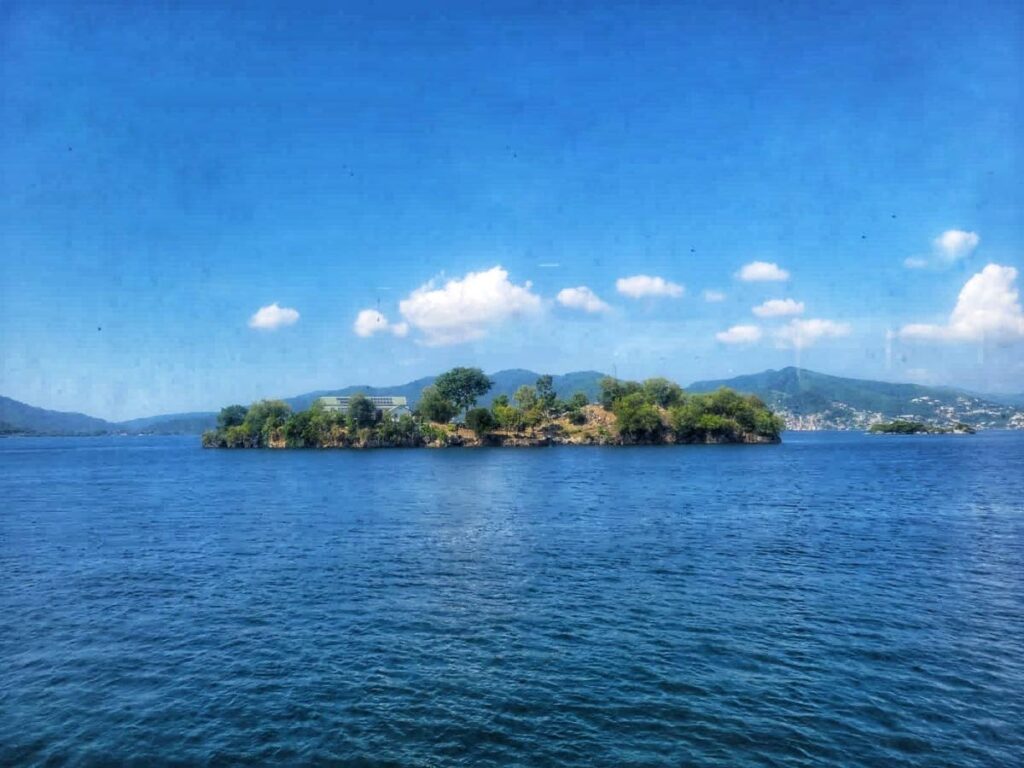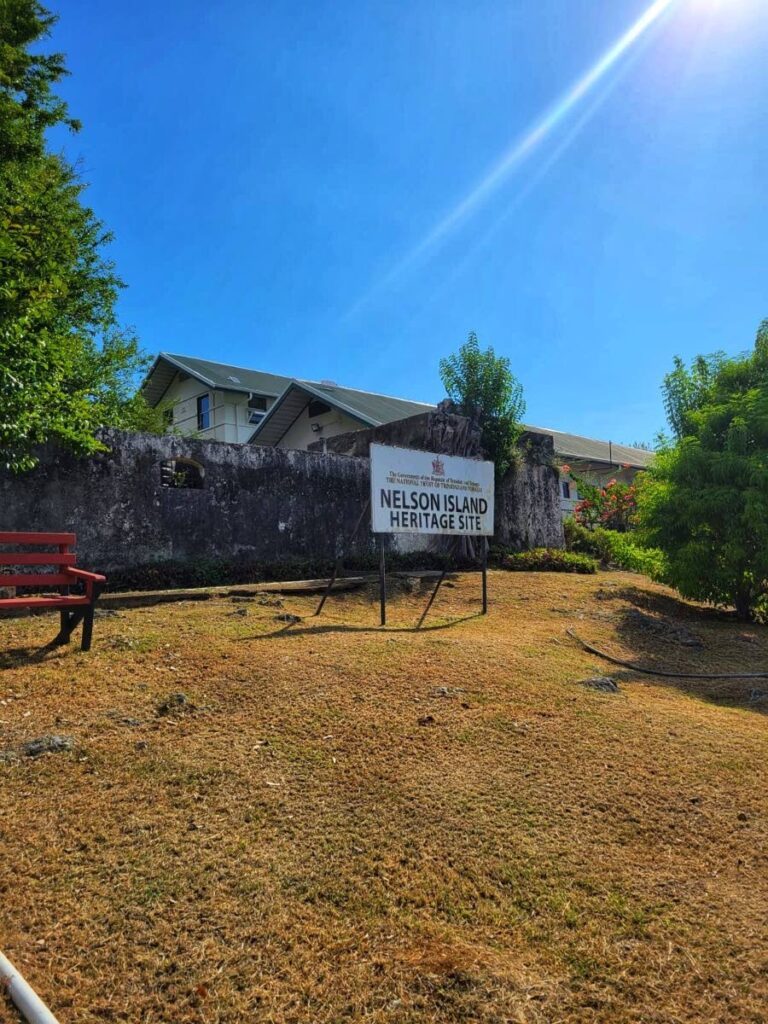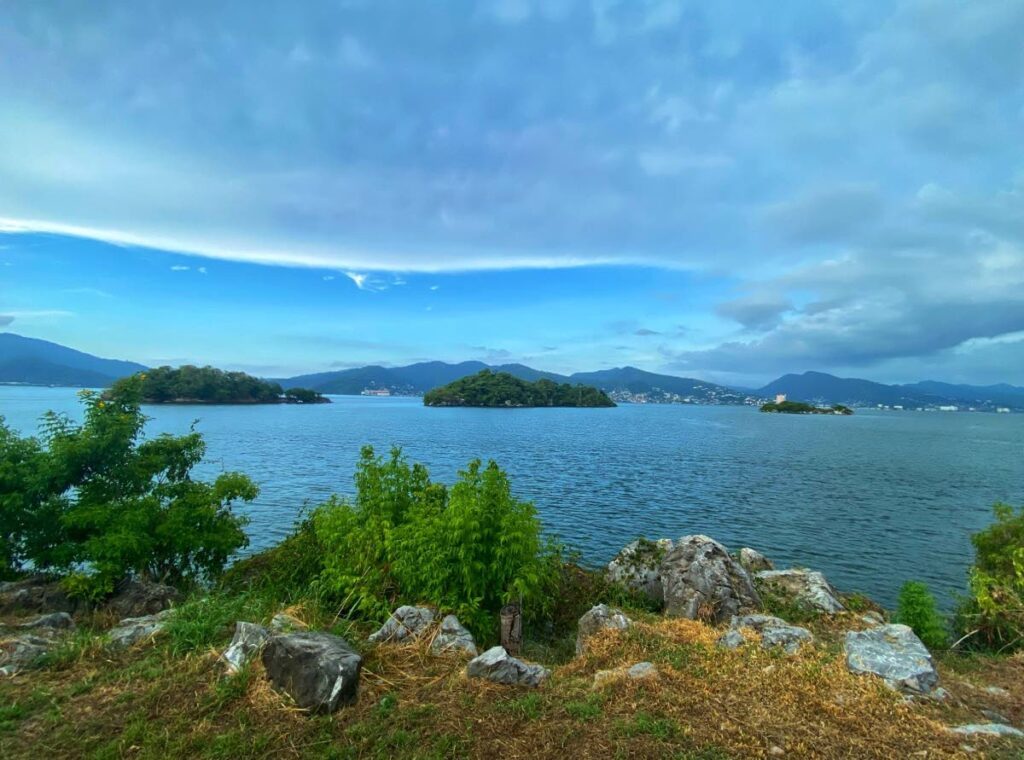Day tripping to Nelson Island

Anjani Ganase visits the immigration island through which many entered Trinidad, and reflects on the importance of knowing what was there.
I see the Five Islands on the way to work every day, even cruise past them by boat or kayak on occasion. I’ve always viewed these islands as abandoned or uninhabited.
I had the opportunity to change my mind when the National Trust invited me to tour Nelson Island and learn about its place in our history.
Nelson Island is a National Heritage Site, one of the group known as the Five Islands, all under the jurisdiction of the National Trust. The trust refurbished the buildings and outfitted the island to hold educational tours, or as a site for exhibitions and workshops.
We gathered at the Port of Spain water taxi terminal and were escorted onboard – about 100 passengers. The island is tiny – roughly 150 metres in length – yet spacious enough for exploration in comfort. The island is also elusive, as neither Nelson Island nor the Five Islands is visible on Google Maps.

The boat ride on the water taxi was a comfortable cruise along the gulf coast of Port of Spain. Heading west, the coastline transitions from port and industry to residential areas.
As we cruise, we are encouraged to imagine the coast some 200 years ago without industry, when the economy was run by plantations, slavery and indentureship.
Back then, the sea was a place from which invasion was a constant threat and the island had to be defended. In the distance, Fort George stood out as a clearing atop the hill. Also known as La Vigie or the lookout, it was built in 1804 by the British, but never saw any battle. Years later, it became a signal station for navigation in the gulf until the early 1900s.
Back then, the Gulf of Paria was referred to as Golfo de la Ballena, or Gulf of Whales. However, by the late 1800s, intense whaling resulted in the decimation of the whale population and it was then called Golfo Triste, or the Sad Gulf. To this day, whales have not returned to the Gulf of Paria.
The ferry slows as we approach the Five Islands, which are actually six islands – Caledonia, Craig, Lenagan, Nelson, Pelican, and Rock. In all Trinidad has 12 islands off its northwestern peninsula, with many referred to collectively as DDI, or Down De Islands.

The Five Islands sit south of the old Alcoa bauxite facility. The islands, in order of size, are Caledonia, Nelson, Lenagan, Pelican, Rock and Craig (less than 500 square metres). The islands are rocky, with one or two coves and are surrounded by shallow, rocky reefs. The reefs are well explored, and artifacts have been uncovered. The islands themselves are heavily vegetated, and some have been planted.
Nelson Island was originally named after Dr Thomas Neilson, a wealthy doctor living in Port of Spain who was granted the island as a holiday home. All the islands served as vacation homes for the British elite in the early 1800s.
But before the British, the islands were used by the first peoples as a fishing spot and for bartering. No doubt a main draw to the islands would have been the marine life below – coral reefs and a multitude of fish.
We approached Nelson Island along its south side to glimpse the large silk cotton tree at the centre of the island; it has stood for over two centuries. Also standing are some of the first buildings to be erected on the island around it (in 1802), now equipped with solar panels for more sustainable energy use. The ferry looped around to the north side of the island and docked where many have come ashore before us. As we disembark, the serene scene is at odds with stories of those who stepped on to the island in the past.
When the British seized Trinidad from Spain in 1797, Nelson Island was reinforced as a barracks for defensive purposes. From 1866, for about 80 years, the island served as immigration processing site for indentured Indians arriving in Trinidad. Some 114,000 Indians were processed on the island. Nelson Island along with Lenagan, Craig and Caledonia, served as a quarantine centre for sick men, and women and children, who were held on separate islands. This was the first place in the country where cremations were permitted for those who succumbed to their illnesses.

The buildings on the western side served as hospital and doctor’s quarters, and then detention cells in later years. The oldest building was built in 1802 and stands today with modifications over time. During the labour riots in 1930s, Uriah Buzz Butler was incarcerated on the island and stayed throughout the second World War. His cabin was on the western tip of the island, separate from the main building. Today, a holiday cabin has been erected in the same location, for those who may be willing to experience a more peaceful solitude.
During World War II, the Americans were leased the island by the British as a seaplane base. They installed a gun emplacement at the highest point. The semi-circular dugout and bolted attachments hidden by vegetation are all that remain from that time.
The island also served as a detention centre for a couple months for German and Austrian Jews who fled Nazi Germany. They were detained on Nelson Island by the British Crown. After the war many relocated.
A path wraps around the island and allows us to walk the perimeter. Visitors stop and reflect, while the resident corbeaux look down with judging eyes. Along the south side, the path leads to metal planks that stick out from the rocky cliffs over the sea. This was the island lavatory, flushed by the gulf currents.

In the late 1960s and 1970s, the island was used by UWI for its field courses in marine biology.
As a marine biologist, I would have enjoyed exploring the marine world around the Five Islands. I imagine the biodiversity would have been much richer, with healthier coral communities.
The waters around the islands are not clear, and much has changed over the 200-year history. Today, sargassum seaweed grows upward from the bottom soaking up all the nutrients in the water. The once-vibrant reefs are smothered by algae and sediment that runs off the hills of the western peninsula. Are there the willpower and resources to restore the marine world of Nelson’s Island to its former glory?
We return to the ferry and take in the sunset on the way back to Port of Spain, with lots to think about.
Our past is rich with experiences that we can learn from. How do we build on this history?

Comments
"Day tripping to Nelson Island"